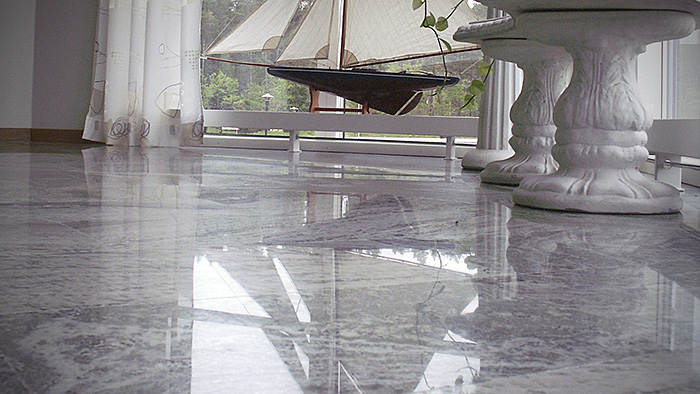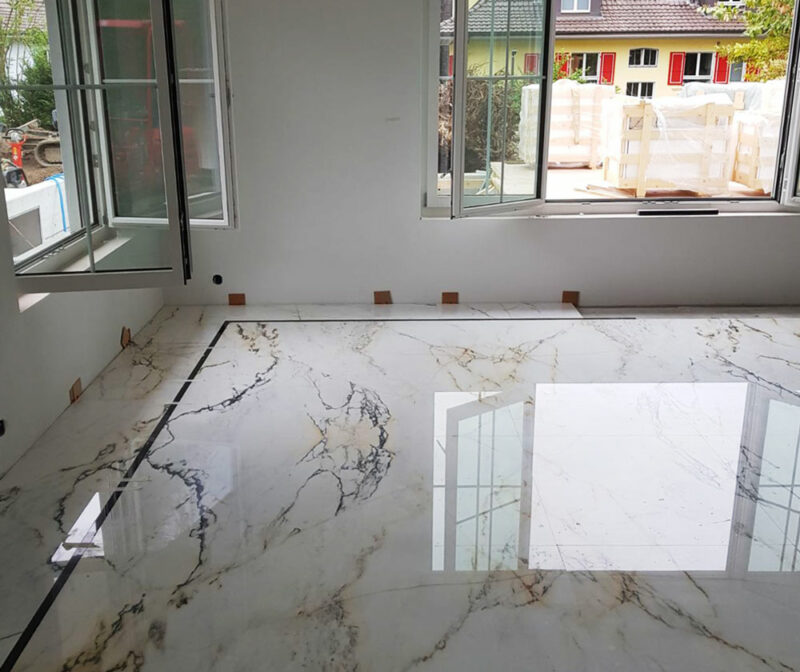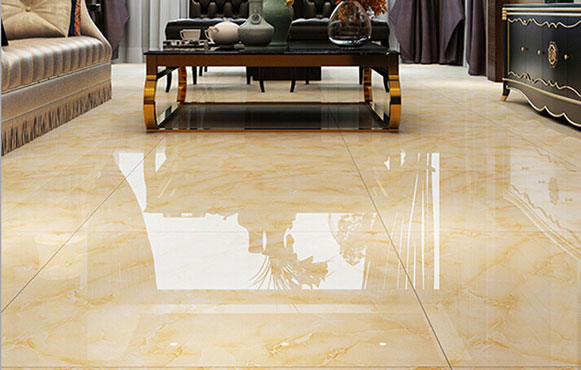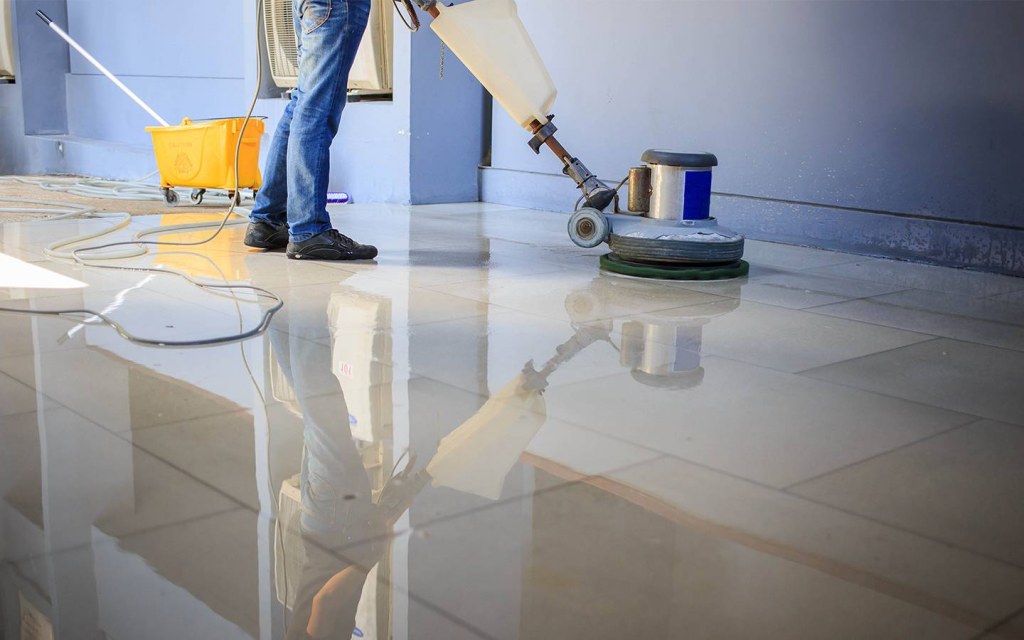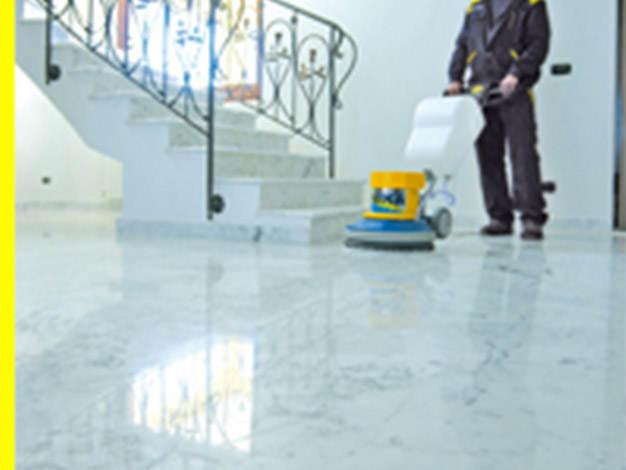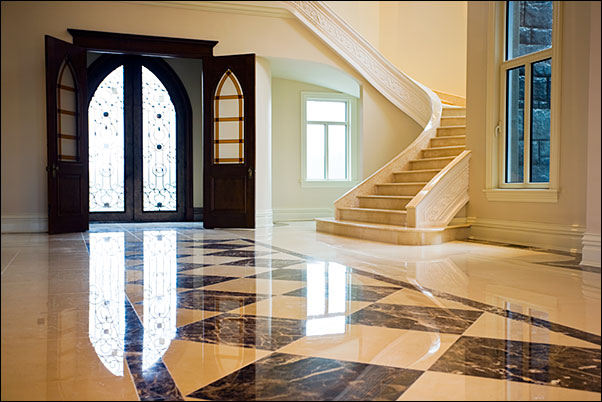Marble floors are known for their timeless beauty and elegance. To maintain their luster and keep them looking their best, regular polishing is essential. However, knowing what to use to polish marble floors is crucial to avoid damaging this delicate natural stone. Here’s a guide to help you achieve a polished and gleaming marble floor.
Marble Polishing Powder: Marble polishing powder is a specialized product designed to restore the shine to marble surfaces. It works by gently abrading the top layer of the stone to remove stains and scratches. To use it, mix the powder with water to create a paste, then apply it to the marble surface and buff it in with a soft cloth or a low-speed polisher. Be sure to follow the manufacturer’s instructions for the specific product you choose.
Diamond Polishing Pads: For more extensive restoration and polishing, diamond polishing pads can be highly effective. These pads are available in various grits, from coarse to fine, allowing you to gradually refine the marble’s surface to a high shine. Begin with a coarser grit and work your way up to finer grits for the best results. Always keep the surface wet while using diamond pads to prevent overheating.
Marble Polishing Compounds: Marble polishing compounds are available in liquid or cream form and are suitable for minor surface imperfections. They work similarly to marble polishing powder but offer a more convenient application. Apply the compound to the marble and use a soft cloth or a buffing machine to work it into the stone.
Professional Polishing Services: If your marble floor has significant wear, deep scratches, or stains that DIY methods cannot resolve, it’s advisable to seek professional marble polishing services. Experienced technicians have the expertise and equipment to restore your marble floors to their original beauty without causing further damage.
Maintenance and Prevention: Regular maintenance can help prevent the need for intensive polishing. Clean up spills promptly to prevent stains, use coasters under beverages, and place rugs or mats in high-traffic areas to reduce wear. Additionally, use pH-balanced, non-abrasive marble cleaners for routine cleaning to avoid etching or dulling the surface.
Protective Sealants: Applying a quality marble sealer after polishing can help protect the surface and prolong its shine. Sealers create a protective barrier that makes it easier to clean and maintain your marble floors. Reapply the sealer as needed, typically every 6-12 months, depending on the level of foot traffic.

Include a specialist cleaning to your regular maintenance and there’s no reason the floors of yours should not look their greatest much of the minute. If you like way too, you are able to make use of area rugs which work with the pattern of this marble, particularly from the cold winter months. This may not be seen on the marble floor tiles until the next day because of the drying out process. 10 mistakes to avoid when polishing your marble floor
First, it is not stain resistant, because it’s porous it is able to easily catch stain from juice, washing their hair, ink or perhaps some other house hold items. What exactly are the most typical things which you find is a rings from folks setting glasses on the marble countertops of theirs, and also the same goes for a floor you do not desire to set up something damp other will sweat on your marble.
How to Polish Marble Floor? All you need to know! – Wipeout
Polishing a marble floor respecting the stone TINO Natural Stone
Marble polishing – How to polish marble – Dedalo Stone
How to Clean Marble Floors –
17 Clever Ways to Clean Marble Floors
Marble Polishing Tampa, Marble Restoration, Polish Marble
Cost of Polishing Marble Floors: DIY vs Professional Zameen Blog
Do It YourSelf Marble Restoration u0026 Polishing thanks to SuperShine
Polishing a marble floor respecting the stone TINO Natural Stone
Pin on living room
How to Polish Marble Floor? All you need to know! – Wipeout
Crash Course: How To Clean, Polish and Maintain Marble Floors
Related Posts:
- Marble Flooring Installation Cost
- Hexagon Marble Floor
- How To Clean Bathroom Marble Floor Stains
- Bathroom Marble Flooring Ideas
- Large White Marble Floor Tiles
- Marble Flooring Designs For Entryways
- Italian Marble Flooring Design
- Marble Floor Crack Repair
- Marble Floor Alternative
- Living Room With Marble Floor
What To Use To Polish Marble Floors
The timelessness and exquisite beauty of marble floors make them a desirable option for many homeowners when it comes to decorating their flooring. However, it is important to also understand how to properly care for marble floors to ensure the best results in terms of shine and longevity. The best way to care for marble floors is to clean regularly and use a marble polish to provide a lustrous finish. Read on to learn more about what to use to polish marble floors.
Clean Before Polishing
Before polishing a marble floor, it is important to ensure that the surface has been cleaned thoroughly. This can be done using a mild cleaning solution that is made up of warm water and gentle dish soap. It is important to use a soft bristled brush when cleaning the solution off of the surface of the floor, as this will help avoid any damage that could occur from scrubbing too hard with a harsh brush. The floor should then be dried completely before continuing on with polishing.
Choose the Right Marble Polish
When it comes to selecting the right marble polish, there are certain factors that need to be taken into consideration. Firstly, consider whether the marble is honed or polished before choosing a polish as each type of finish requires different products. Polished marble will require a more intense product than honed marble, while honed marble can benefit from a more natural option such as carnauba wax.
The next step is to choose the right product for the job at hand. There are various types of polish available, including abrasive pastes, liquid polishes and sprays. Abrasive pastes may require some elbow grease but are very effective at providing a deep and glossy shine and often don’t need much in terms of maintenance after application. Liquid polishes are easier to use than pastes and offer quick results but may not last as long as some of the other products available. Sprays may work similarly to liquid polishes but are easier to apply in large areas and can often provide quicker results.
Application of Marble Polish
Once the correct product has been chosen, it is important to understand how to apply it correctly to get the best results possible. Abrasive pastes should be applied using a damp piece of cloth lightly dipped into the paste before being spread across the surface of the floor in small circular motion. Liquid polishes should also be applied with a damp piece of cloth before being spread evenly across the floor in straight lines until the desired area has been covered. Finally, spray polishes should be sprayed lightly across the entire surface area before being buffed dry using a clean cloth or microfiber mop head.
Frequent Maintenance
When it comes to keeping a marble floor looking its best, regular maintenance is key. To extend the longevity of any polish used on marble floors, it is important to clean regularly using warm water and mild dish soap as well as dusting regularly with a soft bristled brush or vacuum cleaner attachment. Additionally, applying an extra light coat of polish every few months can help keep marble floors looking vibrant for longer periods of time.
Frequently Asked Questions About Polishing Marble Floors
Q: Can I use vinegar on my marble floors?
A: Vinegar should not be used on polished or honed marble floors due to its acidic nature which can cause damage to the surface of the stone over time. It is fine however, if used sparingly on unpolished marble floors that are intended for outdoor use only.
Q: How often should I polish my marble floors?
A: Marble floors should be polished every few months in order to maintain their shine and protect them from damage caused by wear and tear. It is important to apply an extra light coat of polish following each cleaning session in order to keep marble floors looking their best for longer periods of time.
Q: What type of cloth should I use when polishing my marble floors?
A: When applying any type of polish, it is important to use a soft cloth such as cotton or microfiber in order to avoid any damage that could occur from scrubbing too Hard. The cloth should be dampened lightly with either water or a specialized marble cleaner prior to use in order to ensure the best results.

